Shanghai's Gonna Crash!...Like a Bull In A China Shop
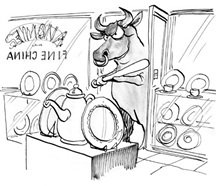 Rising ~150 percent over the past year and more than doubling since Thanksgiving - any way you slice or weigh its breakneck outperformance, the rally in China's Shanghai Composite index has been outstanding.
Rising ~150 percent over the past year and more than doubling since Thanksgiving - any way you slice or weigh its breakneck outperformance, the rally in China's Shanghai Composite index has been outstanding.
Considering that many of the most vocal critics on China and Chinese economic policy have remained tenaciously bearish or bent on qualifying every gain with growing skepticism in the face of such momentum - the magnitude of such a move personifies the underlying nature of how off-balance the consensus opinion was and still remains towards investing in China today.
Last December (see Here), we re-outlined our comparative blueprint for China and the Shanghai Composite index, that was derived in part from the consolidation breakout pattern in US equities in the summer of 1982 - after Tall Paul Volcker applied the screws to the US economy, subsequently knighted around the world as the man that beat inflation.
"In our opinion, what the popular perspective failed to grasp was that the reforms were not about economics per se, but primarily driven by rooting out corruption that had infiltrated all levels of government - and which was a prerequisite to ensuring and maximizing future growth as the economy transitioned to a more mature footing. In essence, where the Chinese saw opportunity - the west feared economic instability.
Back in January (2014), as concerns over the Chinese banking system were brought to focus after the Industrial & Commercial Bank of China refused to compensate investors in a troubled trust, we drew up a weak cartoon (see Here) that depicted what we believed was an overreaction by the west that played on these fears and cognitive biases. Although we won't dispute that future growth in China will likely be considerably less robust than what it was over the past three decades - or that investment excesses weren't evident; we do believe the binary implications inferred with the economic rebalancing hypothesis are misplaced and or exaggerated. Cynics will undoubtedly think otherwise, but while the prescriptions for their afflicted economies are quite different, the tough love provided by Volcker in 1981 and 1982 is similar to the anti-corruption campaign by Xi Jinping over the past two years. Both strangled the market for a spell and set the stage for the next phase in their respective economies." - Taking Off in the Rain
Over the past few months, growth in China has continued to slow, with first-quarter GDP coming in at 7% year-over-year - it's weakest quarterly growth rate since the depths of the financial crisis in 2009. Earlier this year, even its own central bank - the People's Bank of China, revised their own forecasts lower for economic growth and consumer inflation for 2015.
And yet in the midst of such a protracted slowdown, China's equity markets have trounced world indexes once again this year, much to the dismay of the growing den of angry panda bears that perhaps should consider removing the bamboo from their ears, eyes and fingernails and read the writing painted loudly on the wall.
China slowed and didn't implode.
In perhaps the most anticipated bust since America's sweetheart - Vanna White, shockingly graced the pages of Playboy in 1987, China's inevitable slowdown from the halcyon days of domestic investment, has been on participants and pundits radars since China's GDP growth peaked in 2007 at 14 percent and the then white hot Shanghai Composite index crested above 6000. Since then - and with the financial crisis magnifying investors concerns and cynicisms, there's been an endless drumbeat of implications behind the steady decline that has seen China's growth rate cut in half - and up until last year whittled over 60 percent (+70% during the financial crisis) off the Shanghai Composite.
Apparently - it seems, not deep enough for some.
And while the pandas will cling to the obvious slowdown that has come to fruition - or push back the goalposts of an inevitable market collapse, "It's still coming ..." (see most recently Here); behind the numbers the Chinese government has made clear progress in slowly transitioning the economy from driven primarily by capital intensive production - that most economists understood would never be sustainable, to a more developed economy's growth path led by domestic consumption - that for a variety of reasons economist can't quite seem to swallow as easily.
Regardless, a market always marches to the beats of its own drummers - no matter how raucous or persuasive the crowd may be. Although pundits and pandas may qualify the moves under bearish predisposition, ultimately, the proof is in the performance pudding. In this case, there's a lot of pudding.
In hindsight, the broader impressions for us is that the SSEC consolidated with the slowdown in China and as the government instigated its new agenda of reforms back in the fall of 2013, set the stage for the subsequent breakout that coincided as the PBOC returned to looser monetary policy last year. While there's certainly no shortage of fodder for those looking to place the move in an ephemeral and speculative light, the reality clearly acknowledged in the market paints a much brighter picture.
Then again, with two years of daylight now reflected back on the consolidation pattern (see Here), the corollary inferred with the historic breakout in US equities in 1982 appears rather prescient. Although the Joe Granville's of this chapter will undoubtedly fulfill the behavioral biases required and cling to their pandish memes of inevitability, the contrarian outcome has replicated the proportions of the pattern - which defined the cycle low in 2013 and the breakout range exceeded this year. Despite the fact that the magnitude of the move in the SSEC was larger than the historic pattern in the S&P 500, proportionally, the pivots and breakout ranges have remained congruent.
Comparatively speaking, where that leaves us today is potentially at the top of another consolidation range, that admittedly arrived earlier than we had estimated prior to the March breakout. And while we are more than happy to accept any gifts this bull in China may choose to bear or break, we're compelled to further contrast the next structure of the pattern - which alludes to an extended period of consolidation as the S&P 500 digested and accepted its new range over the course of the next year.
As a loose prospective guide, we pulled forward the current move in the SSEC to align with the initial high in the SPX that helped set the top of the range in late 1983. Should the broad structure of the pattern hold proportion, the index will test the highs from early June over the coming months, before consolidating lower over the course of the next year.
Which brings us to a closing thought: if you found the pandas in China were loud this year, just imagine how deafening they'll become if China's equity markets cooled off for a spell. Thankfully, from a long-term bull's perspective - they're still a long way from extinction.






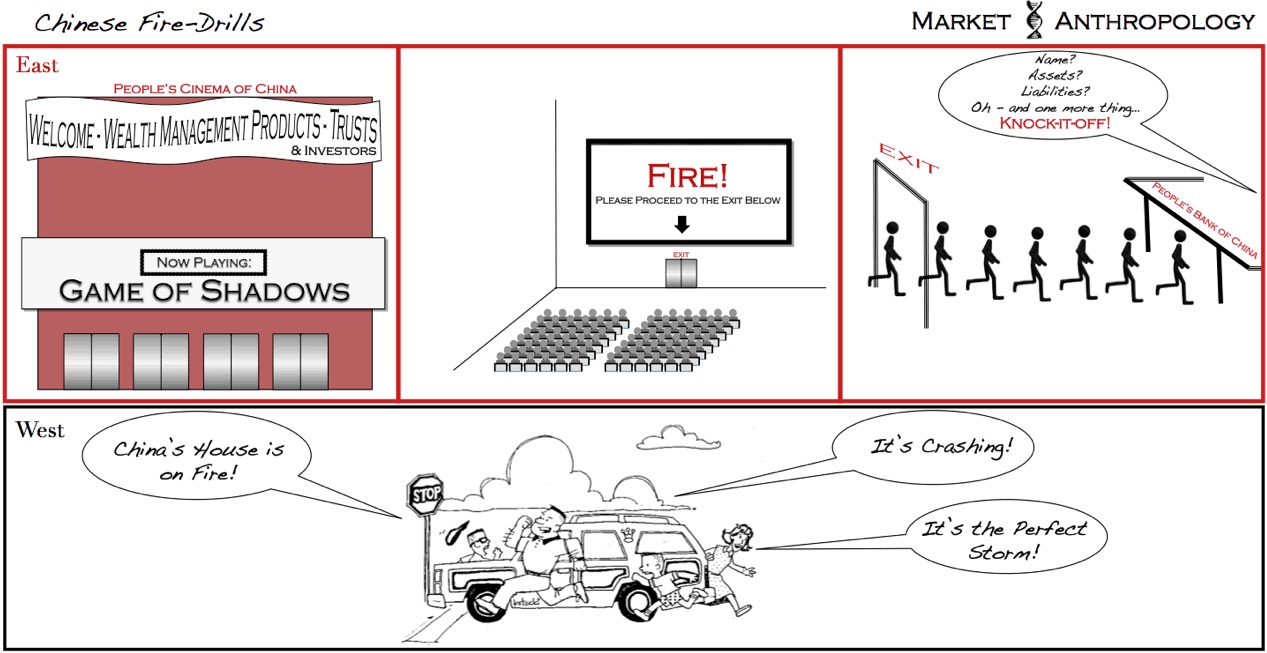
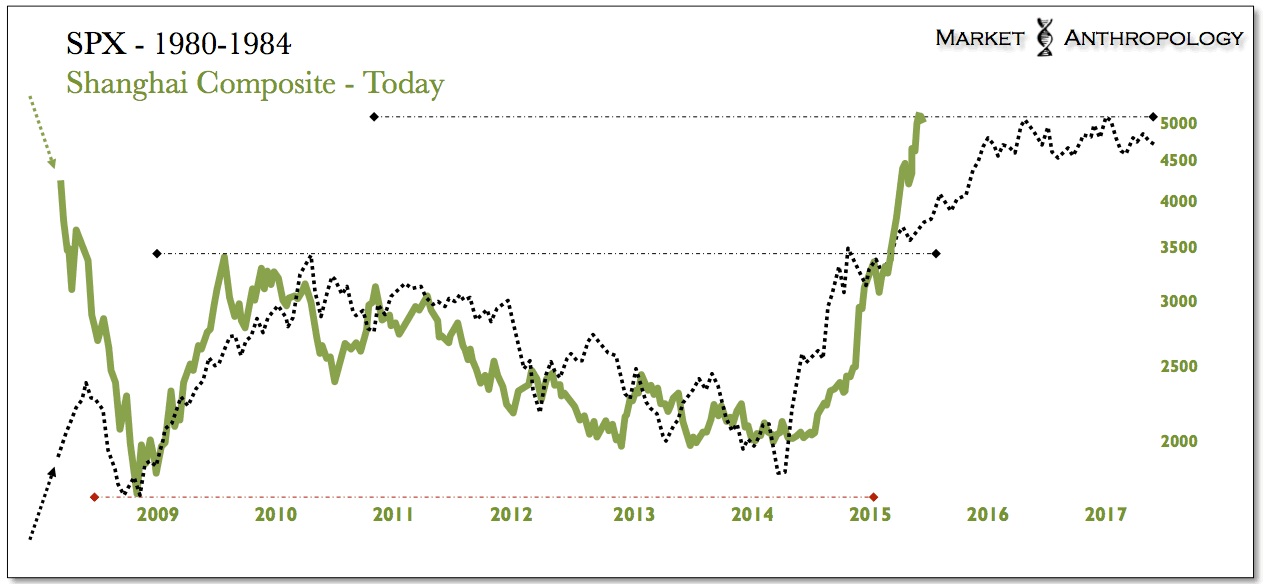
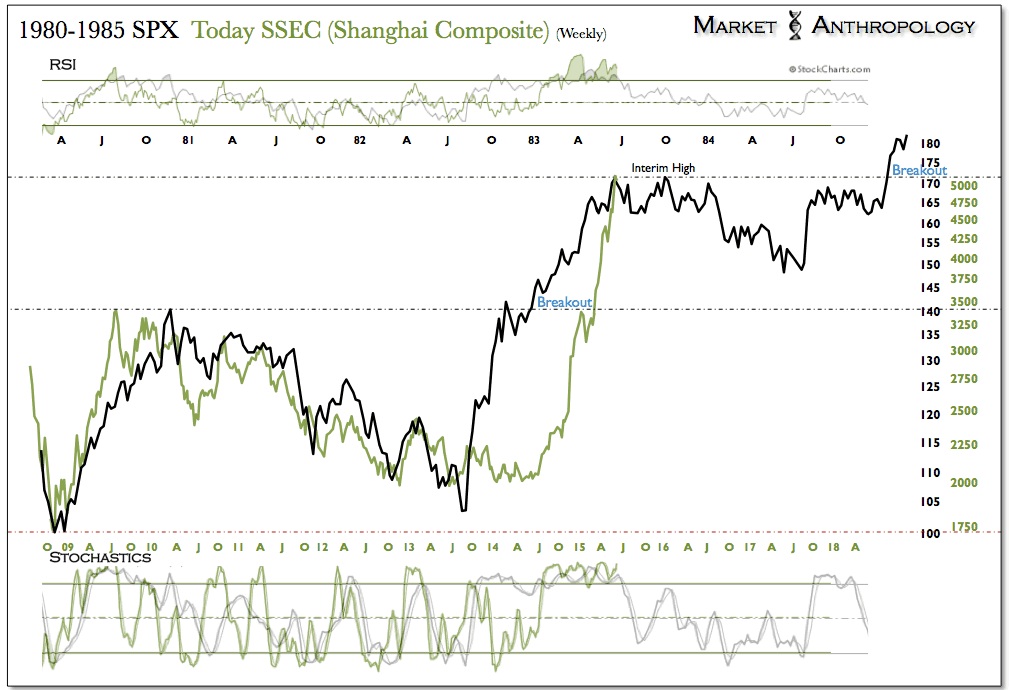
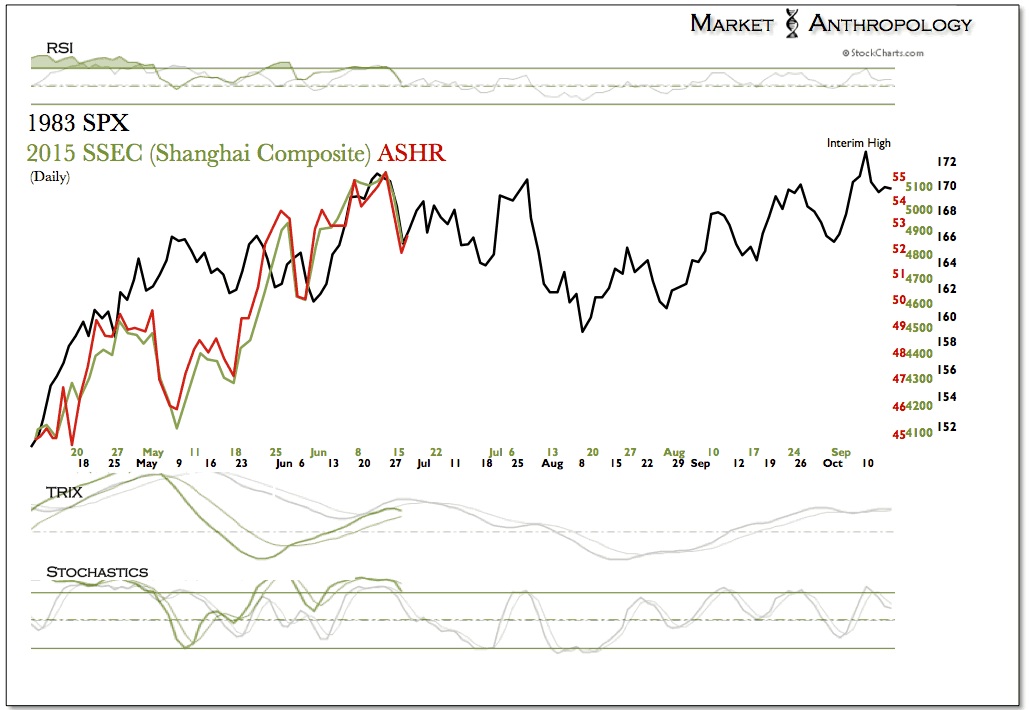
 Erik Swarts is an independent trader and creator of the online market research site -- Market Anthropology. He uses a synthesis of technical and asset relationship analysis to determine a market's respective risk profile.
Erik Swarts is an independent trader and creator of the online market research site -- Market Anthropology. He uses a synthesis of technical and asset relationship analysis to determine a market's respective risk profile. 









